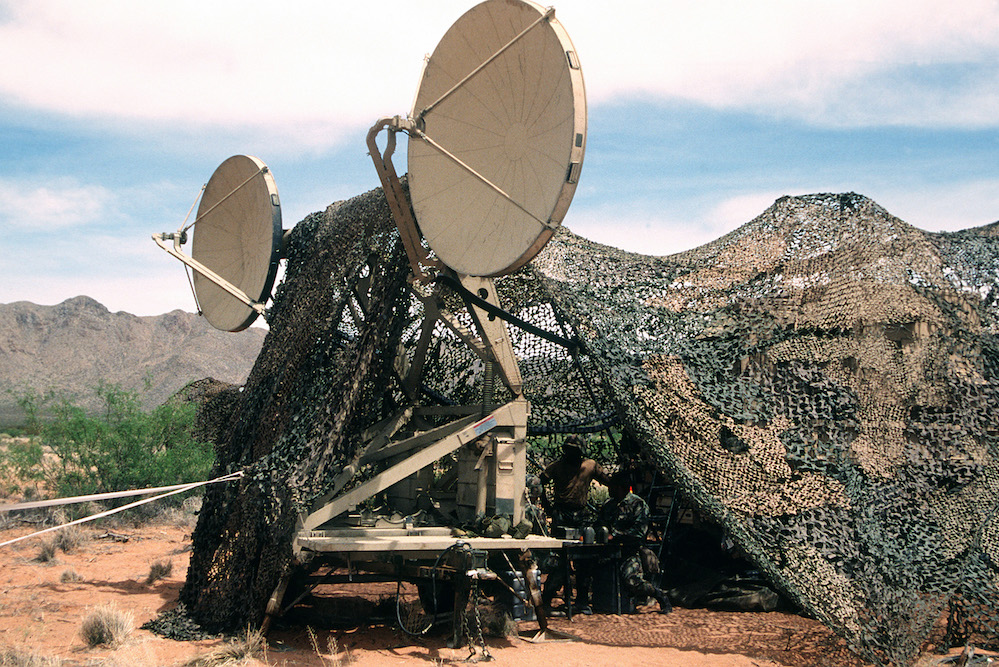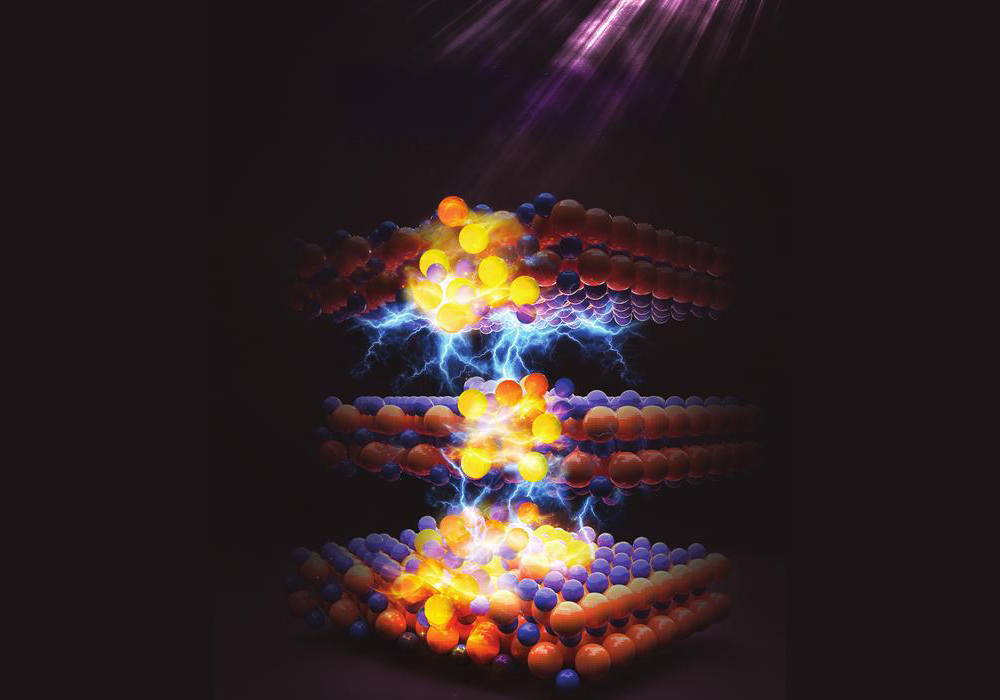
A close-up view of dual 9 1/2′ tropo scatter microwave dishes. They are the quick reaction antenna for the TRC-170 Triple Scatter Microwave System that sends data to the Air Operations Center and Joint Forces Air Command.
[Image above] An example of microwave dishes used by the U.S. Air Force to send data. If these microwave systems could be turned on and off electronically instead of manually, signal interference could be reduced. Credit: U.S. National Archives
While the word “microwave” might remind mischievous youth of the time they watched a marshmallow growing larger and larger inside their microwave oven until the marshmallow ultimately exploded, the word “microwave” conjures quite a different image for communication specialists. Instead of the higher-powered microwaves used in microwave ovens for cooking food, communication specialists use lower-powered microwaves to send all types of information, including audio and video.
However, like other kinds of wireless communication systems, microwave systems are affected by interference. Part of the interference is due to the dielectric materials used in microwave systems. Dielectric materials are insulators that can be polarized, and if the dielectric materials used to process microwave signals absorb microwave energy too well (in technical terms, have a high loss tangent) or if the dielectric materials’ resonant frequency is susceptible to changes in temperature, the microwave system experiences interference.
Scientists have found ways to improve the performance of dielectric materials, but another reason microwave communication systems experience interference comes from the fact there are just so many microwave systems all operating at the same time. Currently, microwave systems not in use must be turned on and off manually to minimize signal interference. If a way to turn multiple systems on and off electronically instead of manually could be developed, it would be much easier to coordinate the timing of sending and receiving signals to minimize interference.
In a recently published paper, Nathan Newman, ACerS member and professor of solid state science, and his research group at Arizona State University showed a way that microwave communication systems could be turned on and off electronically. Newman has been researching the fundamental properties of dielectric materials over the last few years, and this newest paper builds on his previous research to arrive at this possible solution to manual switching.
Back in 2012, Newman and his group published a paper showing that the loss tangent of dielectric materials is most affected by electron spin excitations, or the generation of magnetic fields by the movement of electrons. In the current paper, this knowledge of the effect of spin excitations on the loss tangent value is used to create a way to electronically turn microwave systems on and off.
Usually, switching a dielectric from a low loss tangent to a high loss tangent (from an “on” state to an “off” state) requires very large and cumbersome electromagnets to generate magnetic fields of several thousand Gauss. But Newman and his group found that if the dielectric material is doped with small amounts of magnetic elements—like nickel and iron—defects are introduced into the atomic structure of the dielectric material, allowing the dielectric material to be turned “on” and “off” by applying a magnetic field of under a few hundred Gauss. The reason this technique to turn the dielectric material “on” and “off” works is because the addition of the magnetic elements changes the spin excitations—or how electrons move—in the dielectric material.
This technique will work with any dielectric material, Newman says in a phone interview. His group used the dielectric material aluminum oxide (Al2O3) doped with iron (Fe3+) to demonstrate the proof of principle.
While this research was carried out in temperatures near absolute zero, Newman and his group are working to achieve similar performance of the dielectric materials at or near room temperature. If the same effect is achieved at higher temperatures, Newman says microwave communication systems could be revolutionized in two to three years.
Newman has applied for a patent for the research.
The paper, published in Applied Physics Letters, is “Switching microwave dielectric resonators from a high-Q on state to an off state using low-field electron paramagnetic resonance transitions” (DOI: 10.1063/1.5042226).
Author
Lisa McDonald
CTT Categories
- Electronics

